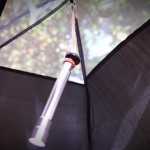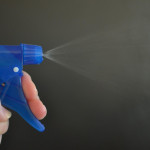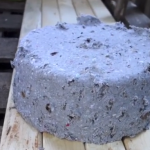How to Dress a Rabbit in Minutes
Rabbit is one of the best meats that you can raise or hunt. Not only are they prolific breeders, but rabbits also feed on healthy foods, which means their meat is lean and full of nutrients that we need. Raising and trapping rabbit is also very easy, and many people think rabbit meat is delicious as well. Let’s look at an easy way to dress rabbit and prepare it for your next meal or storage.
Picking the Right Rabbit
When you have the option, you want to find a rabbit that weighs at least 10 pounds. A smaller rabbit does not have a lot of meat, and you may need to catch two or three in order to get a decent serving size. You should also check the health of the rabbit. If it looks anything other than the picture of health, it’s recommended that you wait until you find a better one.
Sickly, ratty or otherwise bad-looking rabbits may contain bacteria, viruses or other microorganisms that can be transmitted to humans. Their meat may also be of poor quality and taste. Whenever possible, work with good and healthy rabbits for a better and safer experience all around.
Dressing the Rabbit
The skin of a rabbit is not that thick and it also tears relatively easily. You can rip, puncture or cut a gash to start the skinning process without a knife if you have a sharp stick or rock. You can also skin the rabbit with your bare hands with the use of momentum.
To use this rudimentary trick, put your hands around the neck of the rabbit, between the base of the skull and the top of the rib cage. Hold the rabbit and bring your arms above your head with the rabbit’s head facing forward. Spread your legs a bit, and launch the rabbit down and out. The force of your swing can be strong enough to cause its skin to tear off and slide off the body. A good lunge, with the right rabbit can completely skin it from the neck down in one feel swoop.
The only problem is that it takes some practice to get this technique down, and there are many-a-survivalist who had to go fetch the carcass as they lost their grip and it went flying off into the landscape behind them.
A more practical option is to place the rabbit on a cutting board or other hard surface. Lay the rabbit on its side. Pinch a piece of skin along the center of the rabbit’s back, pull it up and then down over the side. Take your knife, stick, rock or hands to make a small tear in the skin that’s in your hand. Let it go once you’ve made the cut. You should now see a hole or gash on the top of the rabbit along the center of its back.
The next step is to stick your fingers inside this hole and pull. You can easily tear the skin and expose the entire body of the rabbit with a couple of good tears. The hole will expand and start to tear along the sides. Keep pulling the skin apart in opposite directions (one going toward the head, and the other going toward the feet), and you can easily slide it off from both ends of the rabbit. You should now have a mostly skin-free carcass that is ready for processing. You may have to pull off pieces of skin and fur along the feet legs, but this whole process shouldn’t have to take more than 2 minutes, so it’s easy to get the job done.
Processing the Rabbit
The next step is to cut off the head and tail of the rabbit. Then, make an incision in the center of the abdomen, below the ribs but above the anus. Be careful because the organs are just below the skin, and you don’t want to puncture them. Lift the skin and make a gash over this area. Take your fingers, insert them inside the gash, and tear the rest of the skin along by lifting and pulling apart at the same time. If you need your knife, you can continue to use it as long as you’re careful not to puncture any organs.
Next, place your fingers up inside the chest cavity until you can bend them behind the heart and lungs. You want to pull down in a firm and consistent motion in order to yank all of the internal organs down and off of the carcass. You may need to snip some of them off with your knife, but the important thing is that you remove all of the organs without damaging them. Fluids that can escape may taint the meat or introduce bacteria or other microorganisms onto the carcass.
Once the organs have been removed, you can start butchering the rabbit according your needs and preferences. Thoroughly wash and pat-dry the meat after processing before preparing your meal or placing it in storage.
Never underestimate the value of rabbit meat, and take some time to learn how to dress and prepare one for your next meal. Getting the hang of things now can make it easier to acquire and process rabbit in a real survival situation.














